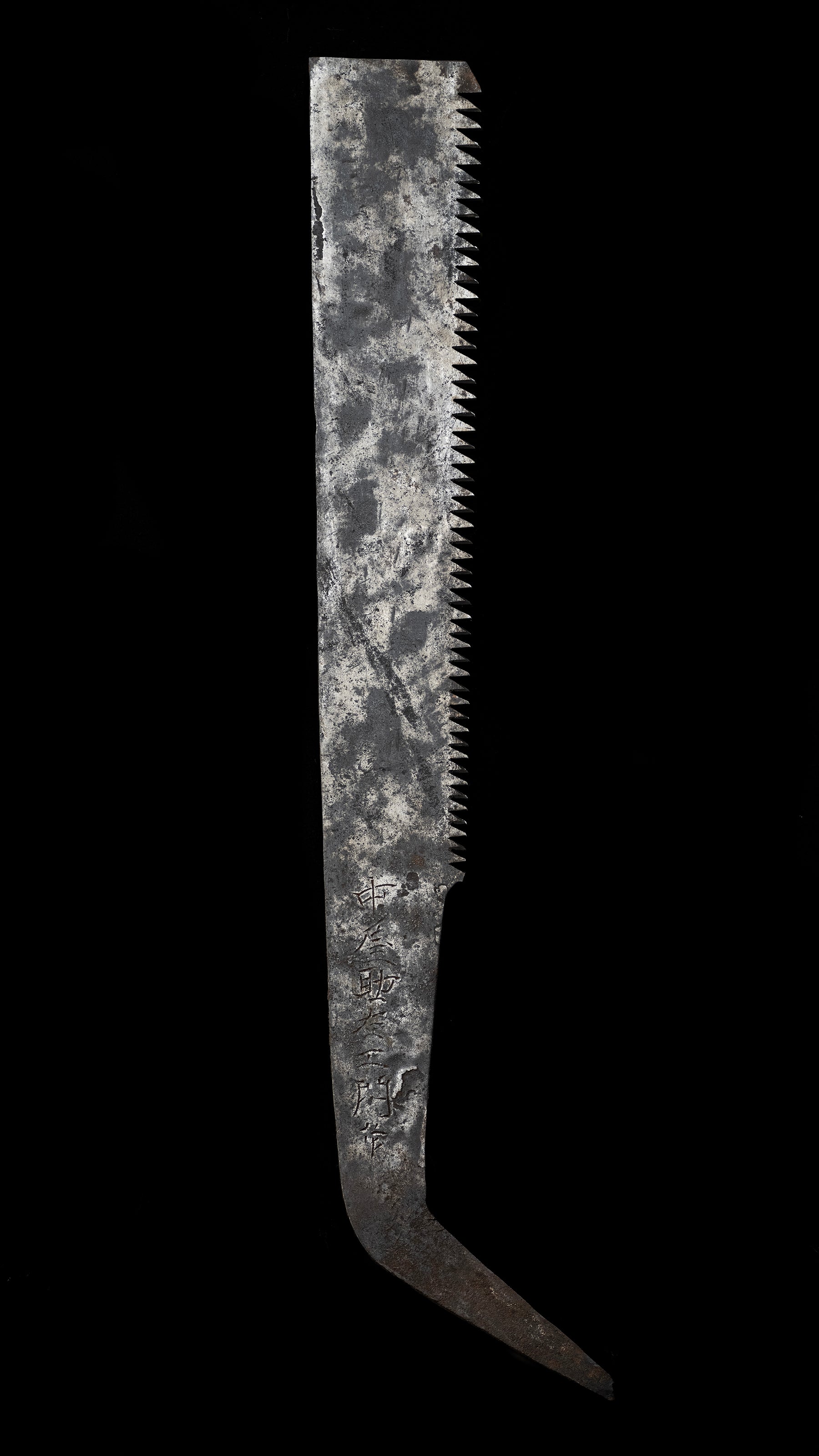
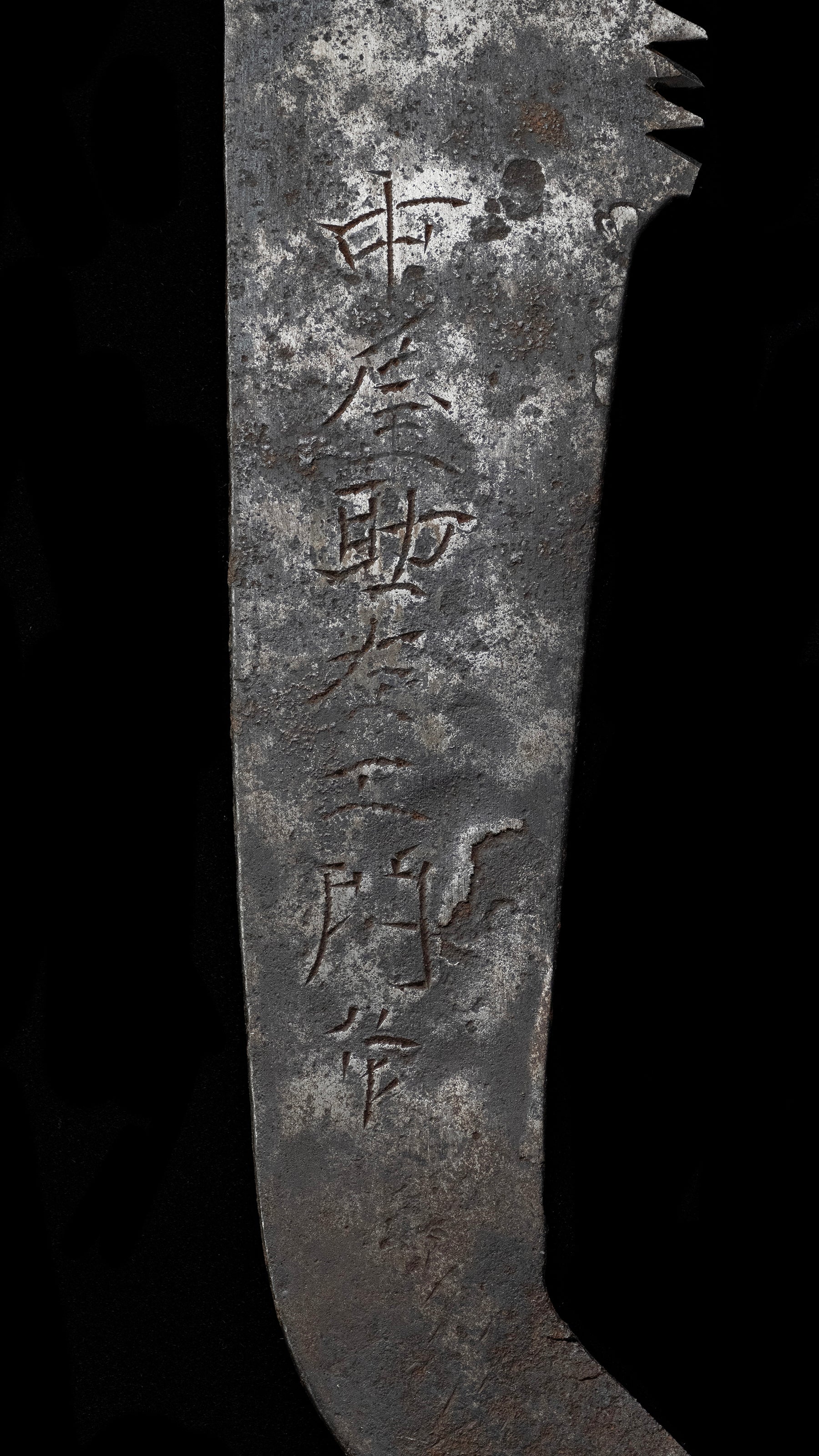
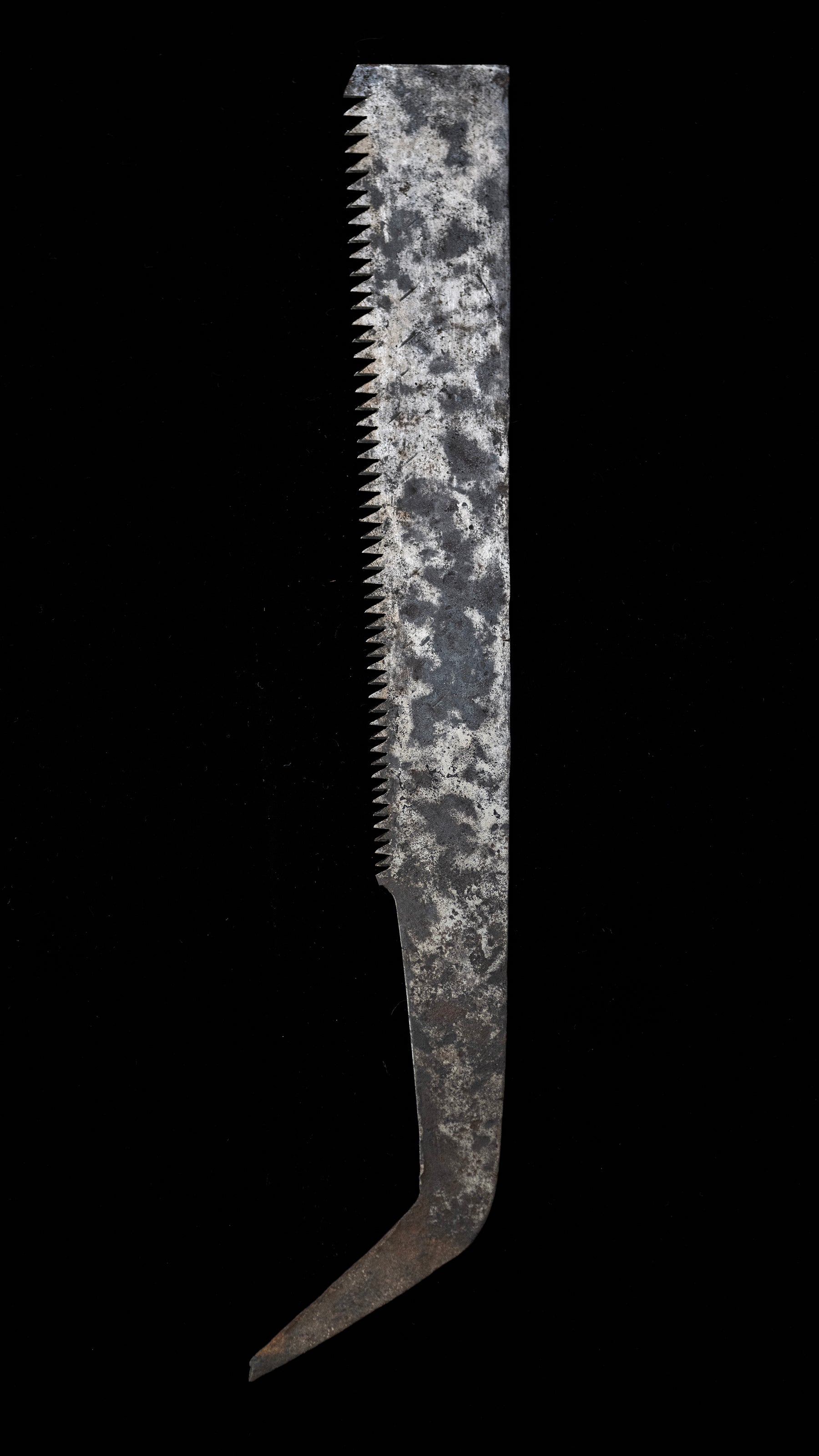
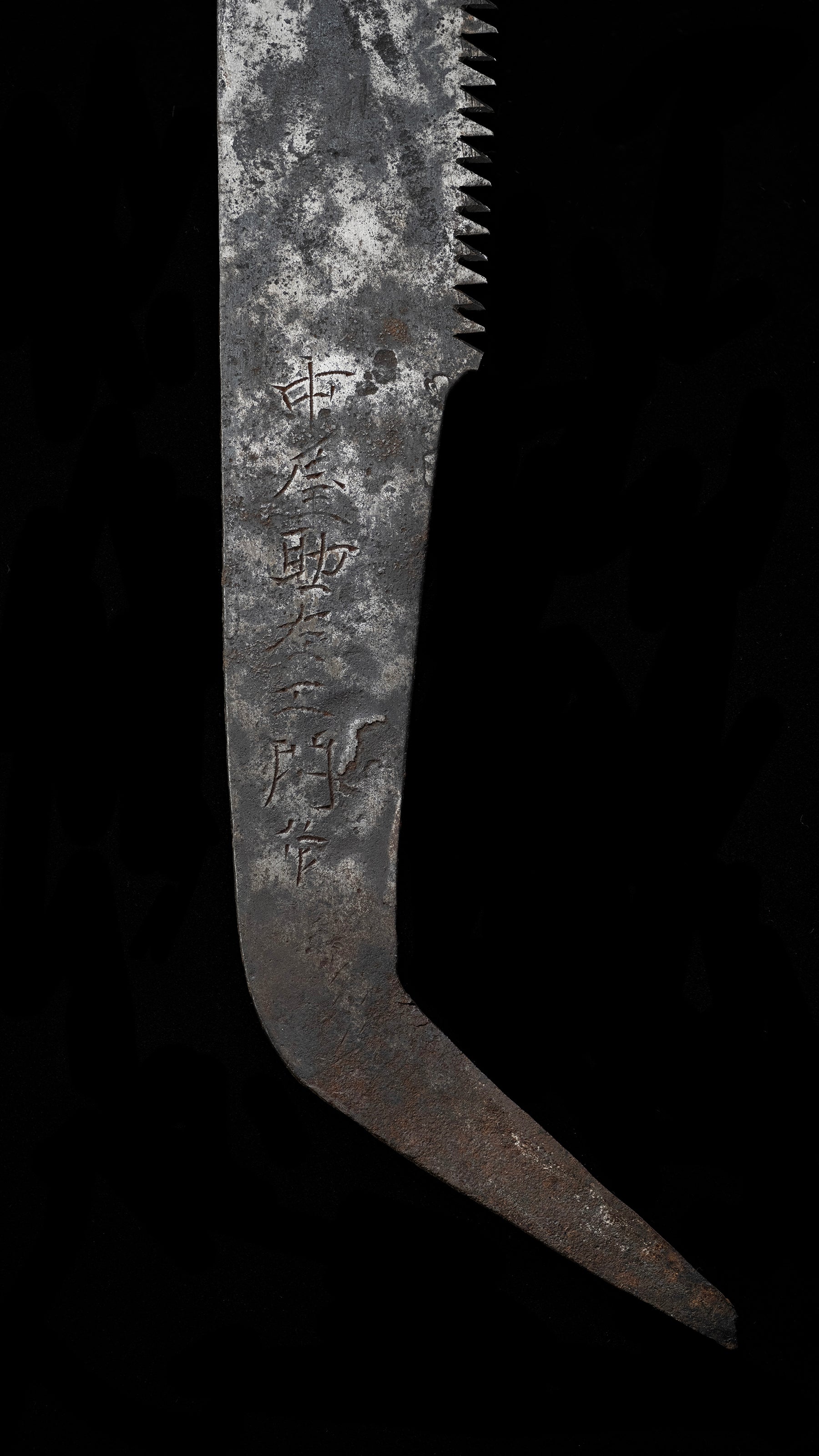
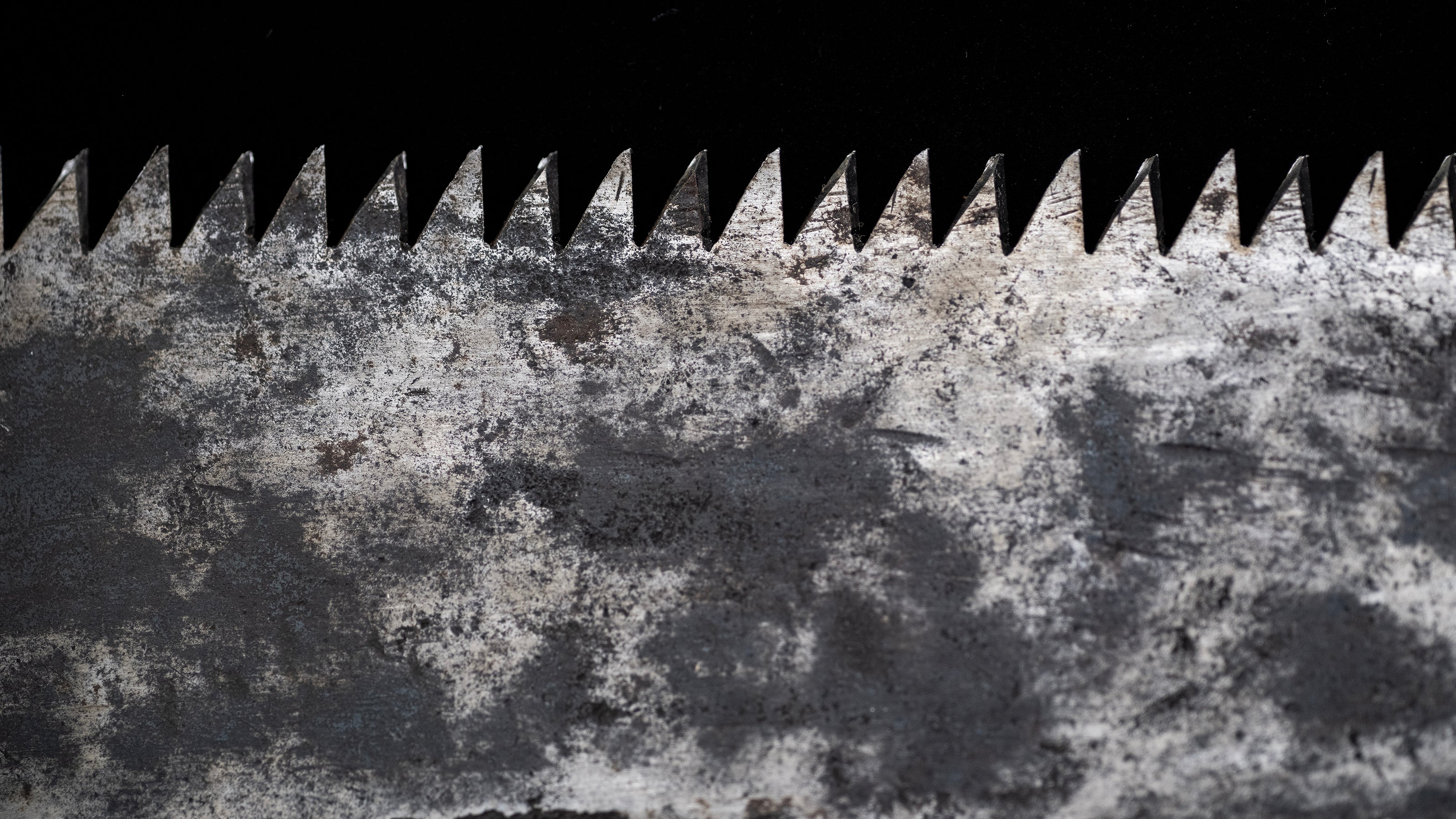
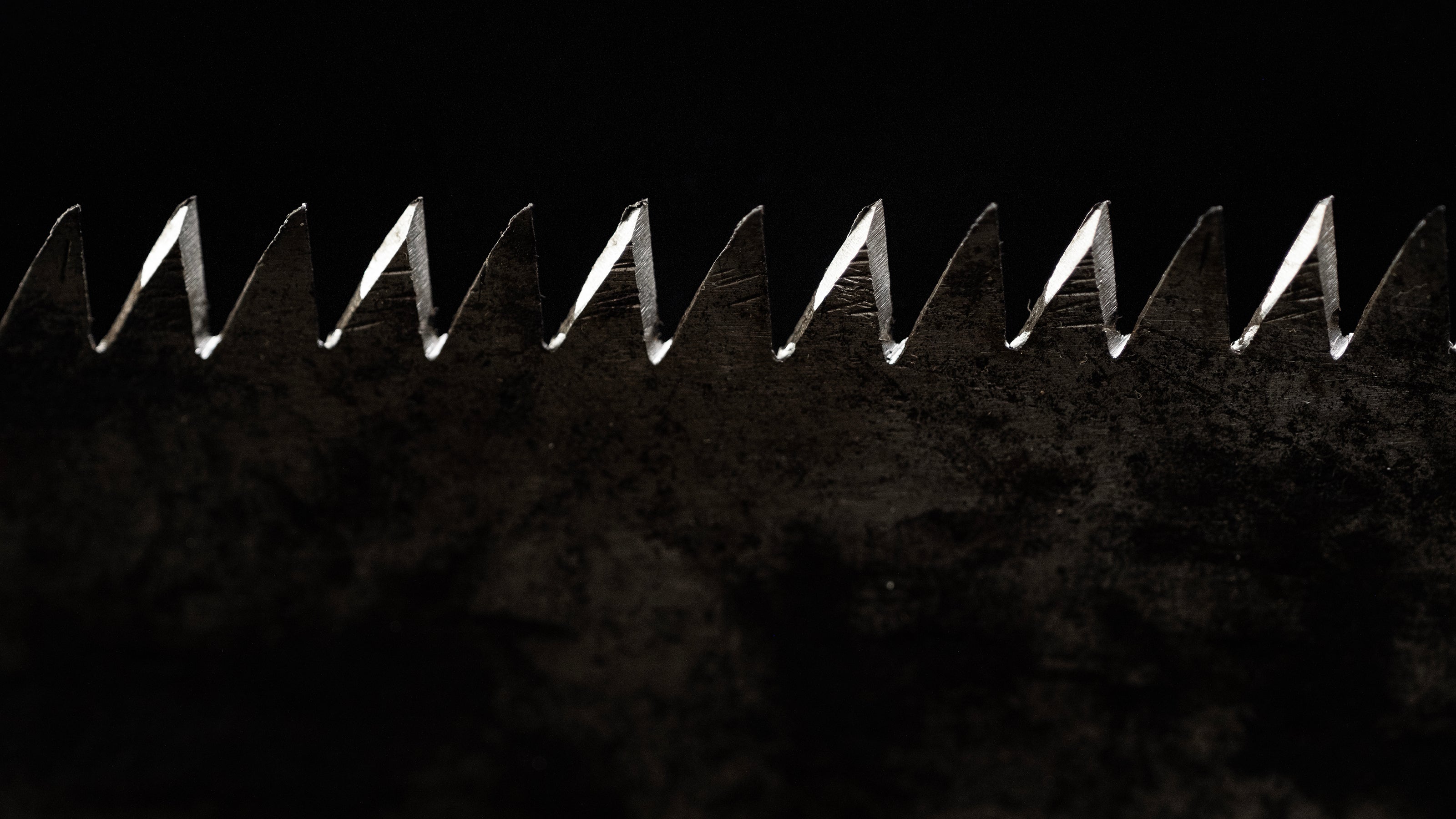
Tamahagane Kataba Noko Japanese Single Sided Hand Saw By Nagaya Sukezaemon - 180mm
Smith name: 中屋助左衛門 (Nagaya Sukezaemon)
Steel: Tamahagane (Identified by Mr. Tsuchida Noboru)
Cutting edge length: 180mm
Total length: 440mm
Blade thickness: about 1.5mm
Widest part of blade: 57mm
Weight: 197g
Blade sharpening and adjusting: Tsuchida Noboru
Manufacture Era: At least before 1880
Accessories: -
Additional Information: Used, in good condition. A lumber saws. Judging from the length of this saw, it should be used to cut off excess branches. I bought this saw from a collector.
※ Unlike other Japanese saws, the part of this saw where the wooden handle is mounted is curved. This kind of saw has a special name called (天王寺鋸/Tennoji Noko). The name Tennoji saw comes from one story: during the Edo period, a sawsmith near Tennoji in Osaka manufactured a new saw with a curved handle part, and the saw was called Tennoji saw. Another story goes that a thief broke into the house of a sawsmith near Tennoji who manufactured hand-curved saws, stole the saw, and was caught. When the sawsmith was called to the magistrate's office and asked the name of the saw, he replied that it was a Tennoji saw, the name of the place where he lived, and so the saw got its name. This type of saw was brought to the Aizu area by sawsmiths who moved from Osaka to the area between 1716 and 1735. It soon became popular in the Aizu area and then spread to the Edo(Tokyo) area.
※ The Nakaya Sukezaemon sawsmith business has lasted for five generations since the late Edo period. The fourth generation closed the business in the mid-Meiji period. The fifth generation has excellent skills, but he is not the apprentice of the fourth generation Nakaya Sukezaemon. At that time, the leader of the sawsmith union in the Aizu area did not want to see the prestigious Nakaya Sukezaemon brand disappear, so he found the daughter of the fourth generation Nakaya Sukezaemon and obtained her consent. He bought the right to use the Nakaya Sukezaemon brand for 5 yen and gave it to the skilled sawsmith. This is how the fifth generation Nakaya came into being. According to some information and my judgment, this saw should be the fourth generation or possibly earlier.
※ The Nakaya Sukezaemon(中屋助左衛門) and Nakaya Juzaemon(中屋重左衛門), They were nationally renowned skilled sawsmiths at the time. In the Aizu region, which is far away from the raw material(Tamahagane) production area, it is difficult to obtain high-quality Tamahagane. But they used their skills to produce high-quality saws, and their quality was far better than that of the sawsmiths in the Kansai region of Japan, which was closer to the Tamahagane production area at that time. The famous Tokyo blacksmith Chiyotsuru Korehide once collected a Nakaya Sukezaemon saw as a research object. The saw is currently in the collection of Tsuchida Hamono.
※ Pioneer of the use of oil for saw blade hardening. In Tsuchida Ichiro's book, Nakaya Sukezaemon was recorded as the pioneer. But there is another view in other credible materials that the eighth generation Nakaya Juzaemon is the pioneer. It is difficult to verify which one was the pioneer, because these two blacksmiths, including the Nakaya Juemon(中屋重右衛門) blacksmith, were relatives. They can be regarded as a technical group.
※ The story of the first generation of Nakaya Sukezaemon. At the end of the Edo period, thieves often used saws to cut through warehouse door latches to steal. It was said that the saw that could cut through the door latch must have been made by Nakaya Sukezaemon of Aizu, the government issued an order to ban the production of saws by Nakaya Sukezaemon.
※ Tips for the Chinese character nakaya (中屋) in the mark. Nakaya Sukezaemon and Nakaya Juzaemon blacksmiths usually use (中や) on carpenters' saws and (中屋) on lumber saws.
オプションを選択
